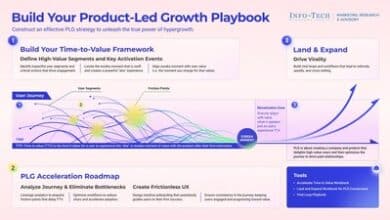With the future of work moving towards hybrid and remote environments, improving employee experience has become a crucial aspect for organizations in attracting and retaining talent. Recognizing this, Info-Tech Research Group has launched a new industry blueprint designed to help IT leaders enhance customer service, reduce shadow IT, and provide their employees with the right tools and technology for an improved overall experience.
The Impact of Technology on Employee Experience
In a recent survey conducted by Info-Tech, nearly half of the over 10,000 office workers, IT professionals, and C-suite executives who participated expressed frustration with their current tools and technology. Furthermore, more than one quarter were considering quitting due to unsuitable technology. This dissatisfaction often leads to increased use of shadow IT—software, services, or devices used without the knowledge or control of the IT department.
Addressing Shadow IT and Service Challenges
The widespread frustration with technology indicates a critical need for organizations to address IT challenges. However, knowing how to approach a solution can be difficult. Sandi Conrad, principal advisory director of IT Infrastructure & Operations at Info-Tech Research Group, suggests giving the business greater control to choose and acquire the solutions that will make them more productive. Alternatively, if the business wants better access but doesn’t want to manage the applications, IT can provide services for application and equipment sourcing.
Info-Tech’s Four-Step Approach for IT leaders
To help IT leaders improve their request management process and create sourcing-as-a-service for businesses, Info-Tech has designed a four-step approach:
- Design the service: Collaborate with the business by identifying challenges, gaining consensus on priorities, and designing the service.
- Design the catalog: Determine the catalog scope, create a process to build and maintain the catalog, and define metrics for the request management process.
- Build the catalog: Develop descriptions for catalog items, create an application portfolio, design catalog forms, and workflows, and define license types, workflows, and service level agreements (SLAs).
- Market the service: Create a roadmap, determine messaging, and establish a communications plan.
In conclusion, Info-Tech Research Group’s new industry blueprint offers IT leaders a structured approach to improve employee experience, reduce shadow IT, and ultimately, help organizations adapt to the evolving future of work. Ensuring executive sponsorship is crucial, as transformation may require investment in tools, skills upgrades, and time. Achieving the right balance of control and service is vital for the success of service request management.



